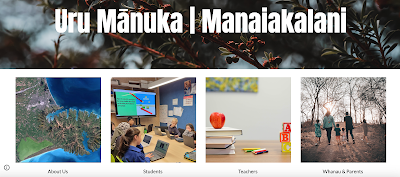I've thought a little about what deliberate and intentional actions we can take if we are to generate a more creative city, a city in which learning is just how we are. It's a complex beast, one in which I am not at all qualified to make grand assertions. But I've been thinking about it. I've asked myself this question: what are the possible levers that we can use to get there?
Maybe these things can (in the language of economics) be classified as macro and micro 'levers'.
The macro levers are those that operate at an institutional and system wide level. In Aotearoa New Zealand perhaps the best example is the impact on education of Tovey and Beeby, and their work with creatives in schools in the 1950s and 60's (one of the best examples of which must be Ralph Hotere, but there were a number of others). This was action that impacted directly on children and young people, action that (so the literature suggests) resulted in an epoch of creativity in our schools. Did it? Not sure, but it seems to be a reasonable assertion. This was also the time of Elwyn Richardson and his ground breaking work in leading learning through the lens of creativity.
Thinking about this macro level in education poses questions around our national curriculum, and the importance that it places (or doesn't place) on creativity. This then (presumably) impacts on the mahi within individual kura. My experience was that regardless of whatever curriculum documents say, it is possible to foster an ethos of creativity in an individual kura, as long as there is leadership from the top.
Within the civic or public space we can question the commitment of civic leaders (both elected representatives and salaried professionals) to the creativity, to the efficacy of creativity, in generating economic activity, innovation, and wellbeing, amongst their citizenry. How easily swayed are they to the benefits of such a focus, especially in these cash constrained times when they are being told that the choice between roads and drains, or libraries, pools, and creative public services, is an 'either/or' rather than an 'and'.
That said, they are still able to consider how they fund libraries in particular, and also museums and galleries, and other public spaces and activities, to support creative thinking and endeavour amongst their citizenry. In Ōtautahi Christchurch the public library spaces at Tūranga, and the redevelopment of the network of suburban library spaces, gives us hope. I note that the soon to open Hornby library (the Matatiki Hornby Centre) will be an absolute delight in terms of the facilities that it offers to the locals that might foster and support creativity and innovation with its dedicated 'Creative Activities Room'. Included will be opportunities ranging from 3D printing to sound recording.
These are examples of those macro level levers which generally are out of the reach for most of us. |
| The old 'New Regent Street', strengthened and repurposed with less traditional retail, and more hospitality, business.. a delightful 'feel' on a sunny day |
What is at stake? I couldn't put it any better than O'Connor and his associates:
Like Freire, McLaren (2000) offers critical pedagogy as an antidote to educationsystems that “replicates social inequity and creates an unthinking consumer class” (p. 123).
A truly democratic society requires people who are fully conscious, or fully awake in the
world, and Maxine Greene argues it is arts-making which brings the individual into awaken-ness (Greene, 1997). Perhaps it is why some might call art or photography ‘a woke subject.’Martha Nussbaum (2010) argues the moral imperatives sitting beneath a democratic society are based on the creation of empathetic citizens. She argues that empathetic imagination has been systematically ignored, and severely repressed, by neo-liberal models of education. (Page 15)
And with reference to our formal schooling system:
We argue how the true measure of public education is not in individual achievement, but in
the success of participatory democracy. What we risk with the current schooling is creating
classes of people disconnected from a sense that they are able to be active participants in
their own lives. We believe the dangers of such an approach during post-normal times is
obvious as new nationalisms and dehumanising ideologies find fertile ground in collapsing
economies. (Page 16)
These words tell me that we face uncertain and worrying times. Let me finish with some words from the Ōtautahi Climate Action Campus:
"Climate Action Campus, Ōtautahi - Shifting young people’s sense of climate anxiety to climate hope. One of the biggest mitigators against climate anxiety is to take action."
Source: https://www.growwaitaha.co.nz/our-stories/climate-action-campus-otautahi-shifting-young-people-s-sense-of-climate-anxiety-to-climate-hope
... which I'd like to adapt like this:
Could we be a "Creative Action Campus, Ōtautahi - Shifting people’s sense of anxiety to hope. One of the biggest mitigators against anxiety is to take action."
References
'Replanting creativity during post-normal times', O'Connor, Anderson, Freebody and Ginns, October 2020



























































